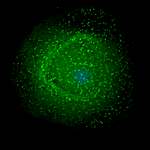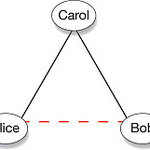Genetics & Molecular Biology

Not to play favorites but there is one area where physics has the life sciences beat: sharing. With preprints and data, the newest findings zip around the globe, before peer review, and science does not collapse.
It's not to say that biology doesn't do some of it; genomes have been placed into the public domain, but that was by government mandate, and the NIH requires its funded studies to be available to all, also government mandate (though, once again, corporate media has gotten a Democrat to try and limit it - no one ever mentions this recurring effort when claiming Democrats are pro…

A gene mutation dating back to 11,600 B.C. is the second oldest human disease mutation discovered so far. The investigators described the mutation in people of Arabic, Turkish and Jewish ancestry, which causes a rare, inherited vitamin B12 deficiency called Imerslund-Gräsbeck Syndrome (IGS).
The mutation is found in different ethnic populations but it originated in a single, prehistoric individual and was passed down to that individual's descendants. The researchers say this is unusual because such "founder mutations" usually are restricted to specific ethnic groups or relatively…

Plants are capable of synthesizing anoverwhelming variety of low-molecular-weight organic compounds, termed“secondary metabolites”, usually with very unique and complex structures. Theyrepresent one of the most diverse and intriguing organic compounds that natureoffers. These are molecules that are not essential for cell viability, butnevertheless play a very important role in the survival and fitness of theplant. Plant secondary metabolitesprovide a battery of chemical defences against insect, pathogen and herbivoreattacks, as well as play an important role in attracting…

The most abundant and important molecules in all living organisms are proteins; after all they manage to participate in every single one of life’s essential reactions. So it is easy to see why scientists have been making such a fuss trying to learn how to synthesise them in laboratory as this would provide them with a tool of extraordinary potential. Unfortunately, this has not proved easy. But an article just out in the journal Science by Bruno Correia, Mihai Azoitei, William Schief and colleagues from the Biochemistry Department of Washington University and the Institute Gulbenkian of…

I could clone you and there's probably nothing you could do to stop me.
Similarly, I could clone Einstein and as far as I know, there would be no way anyone could stop me legally.
Human cloning is coming. Maybe not to a Walmart near you, but it is coming.
And by human cloning, I mean reproductive cloning, not therapeutic cloning which is a totally different cup of tea.
The cloning I’m talking about is where you duplicate a human being.
Despite efforts to prevent human cloning, such as a U.N. resolution, there is no law against it in the U.S. There is a law that protects…

Before human embryonic stem cells can be examined for therapeutic potential it must be determined whether or not transplanted cells can functionally integrate into target organs or tissues.
Human embryonic stem cells (hESC), and induced pluripotent stem cells(iPS Cells), can give rise to all of the 220 types of tissues in the human body, and have been directed in the lab to become many types of cells, including brain cells.
The appeal of hESC and iPS is the potential to manufacture limitless supplies of healthy, specialized cells to replace diseased or damaged cells. Brain disorders such as…

Scientists were able to curb weight gain, improve metabolism and improve the efficacy of insulin in mice by engineering them to express a specific human enzyme, IKKbeta, in their fat tissue, but there was a significant cost; widespread inflammation.
The relationship between fat, inflammation, and insulin performance is complex. The conventional wisdom is that obesity leads to inflammation which contributes to insulin resistance. In this study, the researchers changed the sequence of events for transgenically engineered mice by inducing inflammation via the enzyme IKKbeta in their fatty tissue…

The enemy of my enemy is my friend, an old saying goes. Roman, Arabic or Chinese, it doesn't matter who claims to have credit for immortalizing it first, people have known it to be true since there were more than two people.
Since physicists love Alice and Bob, we can make a psychological dissonance graphic also by introducing a third character, Carol. If the solid lines are positive and dashes are negative, there is equilibrium as long as everyone is an enemy or everyone is a friend. It is where there is one enemy that games of "Risk" really get played.
Positive lines are…
Red blood cells regenerate every four months but the lining of the intestine regenerates itself every few days. The cells that help humans absorb food are constantly being produced and the various cell types that do this come from stem cells that reside deep in the inner recesses of the accordion-like folds of the intestines, called villi and crypts.
Like ancient burial crypts, these adult stem cells are something of a mystery. Two types of intestinal stem cells have been proposed to exist but the relationship between them has been unclear. One type of stem cell divides slowly and…

Experiments have recently supported a longstanding hypothesis that explains how males can survive with only one copy of the X chromosome, a hotly debated topic in science.
Women have two X chromosomes, while men have one X and one Y. The lack of a 'back up' copy of the X chromosome in males contributes to many disorders that have long been observed to occur more often in males, such as hemophilia, Duchene muscular dystrophy and certain types of color blindness. Having only one copy of X and two copies of every other chromosome also creates a more fundamental problem; with any other chromosome…